Published Mar 17, 2021
Defining Alien Names, From Cardassian to Vulcan
Check out the history and real world connections behind the names

StarTrek.com
In the 1990s, American pop culture did not have many references to my parents’ native India. James Bond went to India, once. Indiana Jones, too. But those movies were already a decade old. Star Trek would occasionally drop an Indian name or cameo. Narendra III. Khan Noonien Singh. Lal. Vijay Amritraj, the tennis player, was almost lost to the whale probe. But that movie, too, was a decade old.
And so when Deep Space Nine began airing, my father got a chuckle out of the Jem’Hadar.
What did these dour alien soldiers, so desperately in need of moisturizer, have to do with India? As far as I could tell, nothing. In fact, my mother was more excited to see Salli Elise Richardson play Commander Sisko’s love interest, after mistaking her for an Indian actress. Then my father explained it to me: In the old days, jemadars were junior officers in the British Indian Army.
To me, this unlocked an entirely new dimension of Star Trek. It was a universe under the universe, literally subspace. I always took Star Trek to be a fully formed creation, transmitted wholesale from Hollywood to my living room. I never quite appreciated that writers and producers were making it up as they went along, day after day, looking for inspiration wherever it may be found.
Star Trek’s alien empires were not named by punching random keys on the keyboard. But neither was there a single-minded, Tolkien-esque effort to map the galaxy.
A Timeline Through the Star Trek Universe
In the years that followed, I pieced together real-world stories behind alien names. It was just the sort of trivia that stuck with me. The Indian words were easy. For other species, I figured it out from different sources. David Alexander’s Star Trek Creator: The Unauthorized Biography of Gene Roddenberry was a brick of a book that I received as a birthday present. Stephen Edward Poe’s A Vision of the Future – Star Trek: Voyager, at least, had a soft cover. Beyond that were DVD commentaries, the old Star Trek: Communicator magazine, and (once it was invented) Google. On occasion, I even figured it out from what I learned in school. How else was anyone supposed to learn about Roman mythology?
These were my findings:
Cardassian
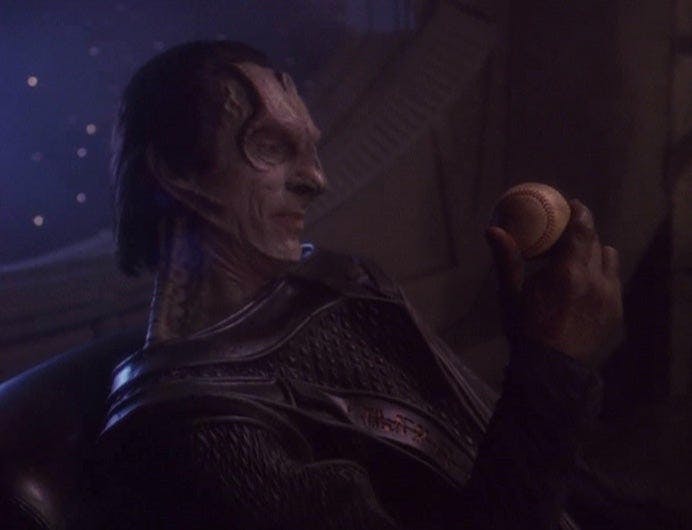
StarTrek.com
Contrary to a lot of speculation in the 21st Century, “Cardassian” was not a reference to the Kardashians. The Cardassian species first appeared in Star Trek: The Next Generation in 1991, four years before Robert Kardashian served on O.J. Simpson’s defense team, and 16 years before Keeping Up With the Kardashians debuted.
So what was the origin of the name? Star Trek: The Next Generation writer Jeri Taylor realized her original name for the species, “Circassian,” was a real ethnic group (from the Caucasus region of Asia, near Turkey). So she tweaked the name by playing with the sounds. Interestingly enough, the surname “Kardashian” is Turkish or Armenian in origin.
Dominion
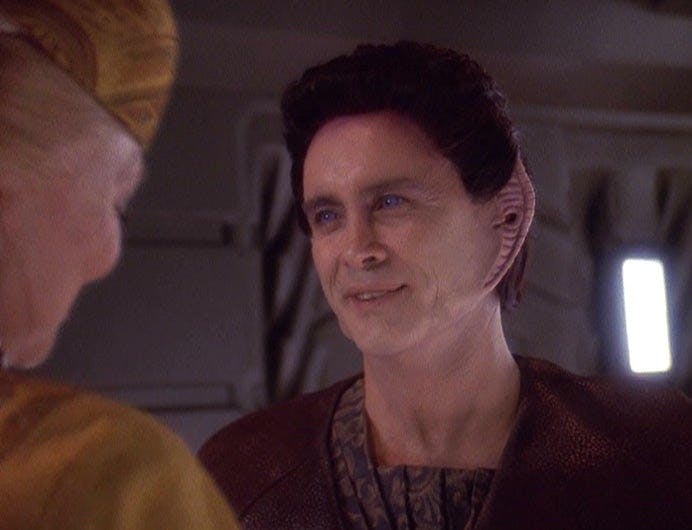
StarTrek.com
This is an SAT vocabulary word, defined as the territory of a sovereign. Notably, the British Empire referred to its self-governing territories as dominions (and the jemadar being the muscle of the dominion suddenly made a lot more sense). In Star Trek: Deep Space Nine, the Dominion was the rare galactic power not named after a particular alien race. The Dominion was intended to be an anti-Federation, a distorted reflection of the Federation made up of numerous species. So it was fitting that, just as the Federation had a common name, so did the Dominion.
Ferengi
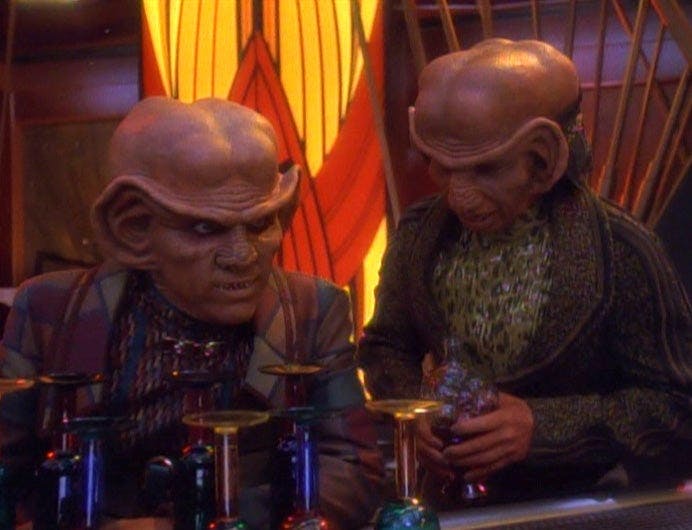
StarTrek.com
StarTrek.com has previously discussed the Ferengi name, with farangi being the Persian word for “foreigner.” I found this curious, as firangi is also a Hindi word ascribed to Western foreigners. As it turns out, the Hindi word has its roots in the Persian word, which has its roots in the Middle East’s exposure to Frankish traders during the Middle Ages. The Franks became the farangi, who became the firangi. In the 1980s, Gene Roddenberry used the name for Star Trek: The Next Generation’s newest villains.
Jem’Hadar
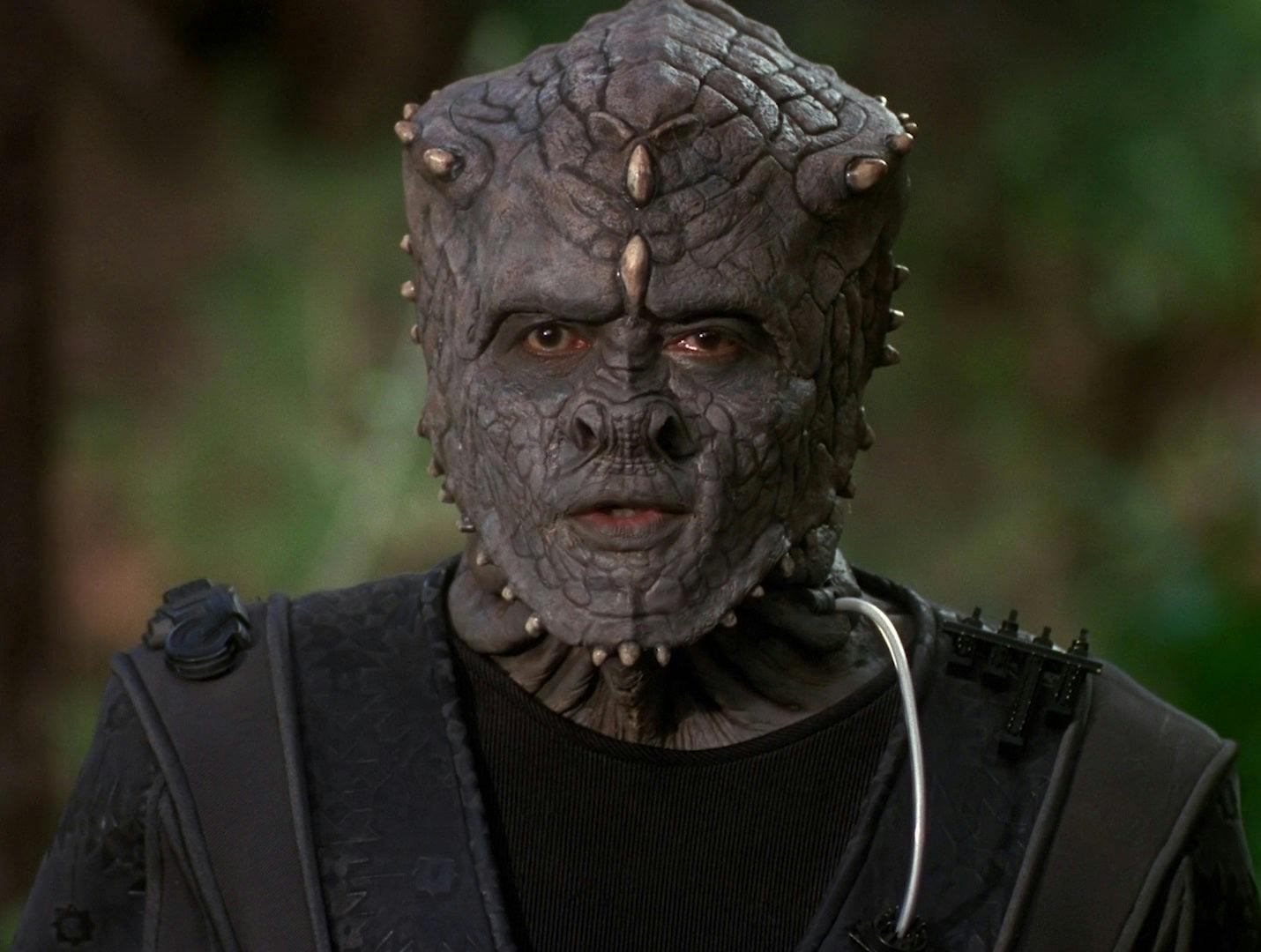
StarTrek.com
As previously mentioned, jemadar was a rank for junior commissioned officers during the British Raj. The word is Urdu in origin, used in other contexts to describe leaders or officials. In Star Trek: Deep Space Nine, the Jem’Hadar were one species of the Dominion, bred as foot soldiers. However, the name was not meant to draw a direct comparison to jemadars. Writer Robert Hewitt Wolfe recalled developing the species, and simply looking up “soldier” in the thesaurus.
Kazon

StarTrek.com
Fitting with American social anxieties of the 1990s, the Kazon’s infighting factions were intended to draw allusions to street gangs. Their original name, however, was slightly different: Gazon. The producers of Star Trek: Voyager changed the name to avoid drawing a comparison to another news topic of the time: the Gaza Strip in the Middle East.
Klingon
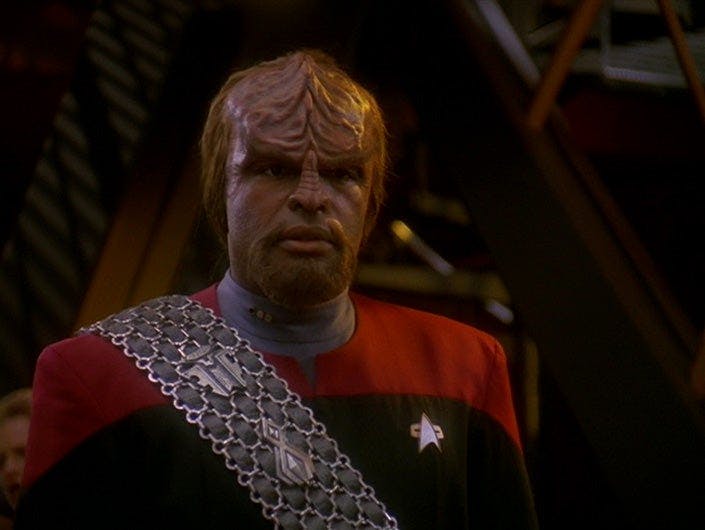
StarTrek.com
The Klingon language is one of the most famous fictional languages, and volumes have been written about the Klingons as an allegory for the Soviet Union. Less well known is the real-world story behind the name.The Klingon species was named after Wilbur Lee Clingan, Gene Roddenberry’s former colleague in the Los Angeles Police Department. Star Trek was not Clingan’s only brush with show business: He also served as a consultant for the 1960s police procedural show Dragnet. In early Star Trek episodes, some characters pronounced the name closer to “kling-in” than “kling-on,” in line with its origin.
Q
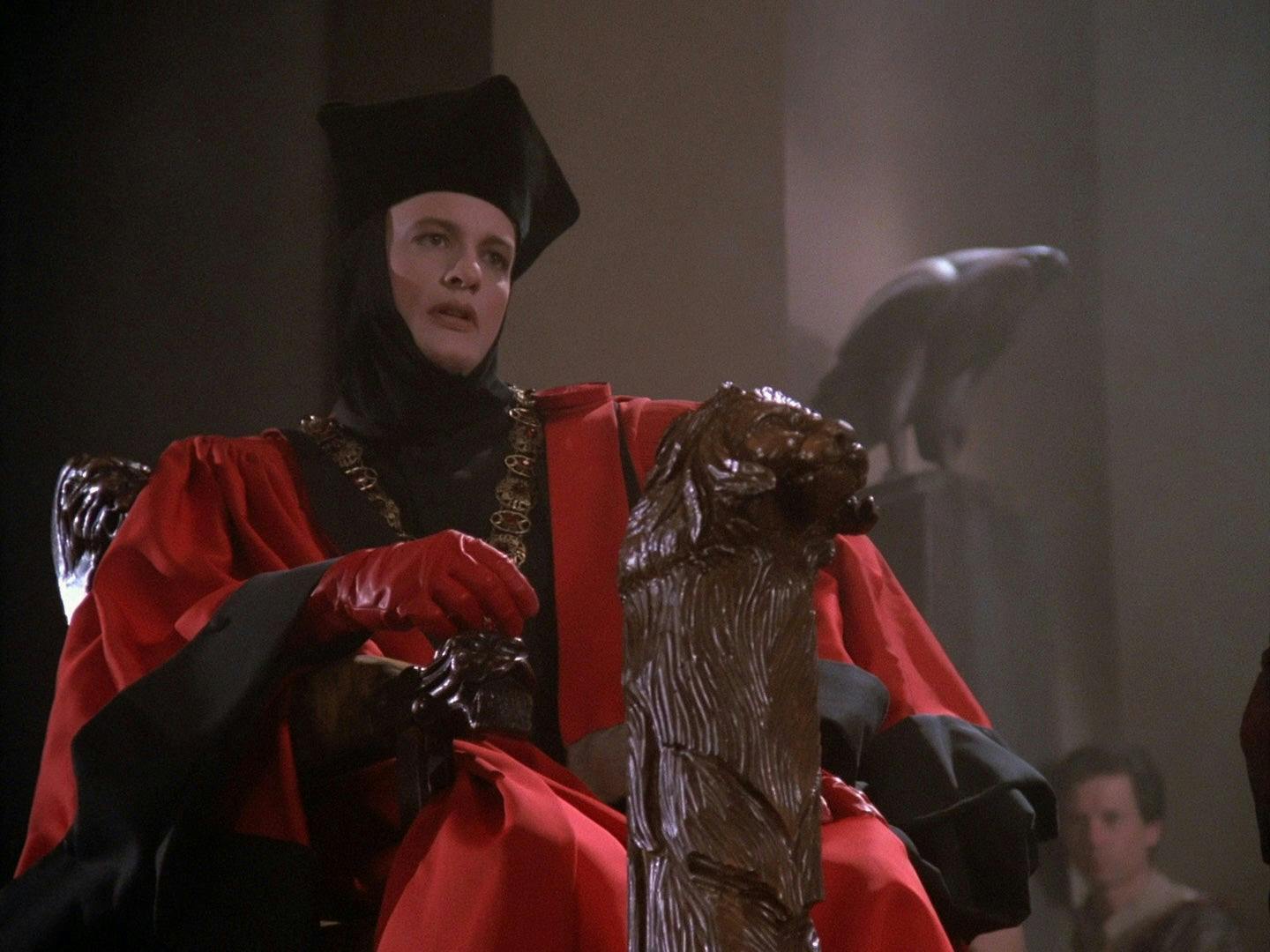
StarTrek.com
When Gene Roddenberry needed to extend Star Trek: The Next Generation’s pilot episode to two hours, he devised Q, the omnipotent trickster from a race also known as the Q. Similar to naming the Klingons after someone he knew, he named Q after Janet Quarton, former president of the UK-based fan club Star Trek Action Group.
Romulan and Reman

StarTrek.com
In Roman mythology, Romulus and Remus were twin brothers who founded the city of Rome. In Star Trek, the characterization of the Romulans and Remans nearly broke the fourth wall, with references to centurions, proconsuls, praetors, and a senate. Quite literally, the “Romulan Star Empire” was just a syllable away from the “Roman Star Empire.” Until I realized this, I never fully appreciated that Captain Kirk was fighting Romans in Space!
Son’a
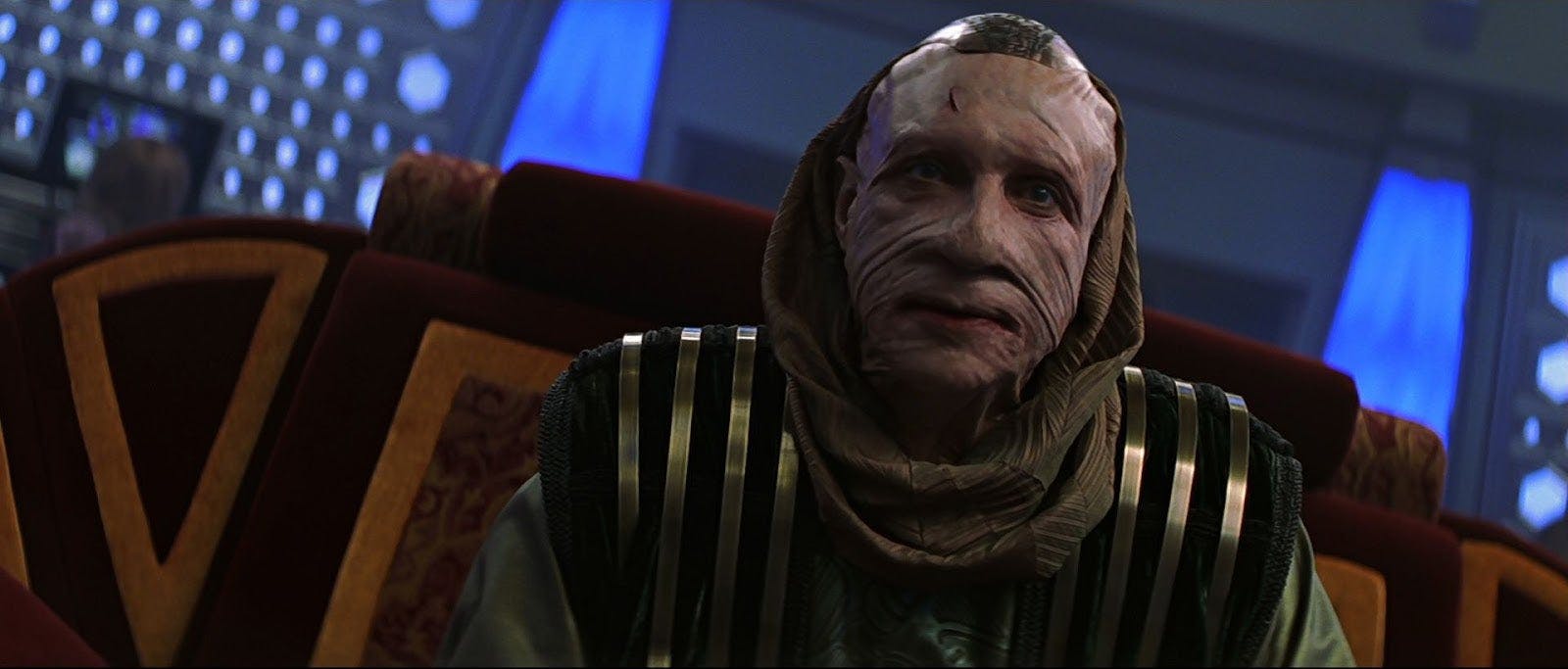
StarTrek.com
This one I caught immediately as a child, as I watched Star Trek: Insurrection in the theater. Sona is a Hindi word meaning “gold.”
The villainous Son’a (who, like the Jem’Hadar, could benefit from a better skin care regimen) had little to do with gold — notwithstanding the warm colors of the film. Some of the most memorable images from Insurrection were the gold-foiled collector ship of the Son’a, and the churning ambers and reds of the Briar Patch.
Suliban
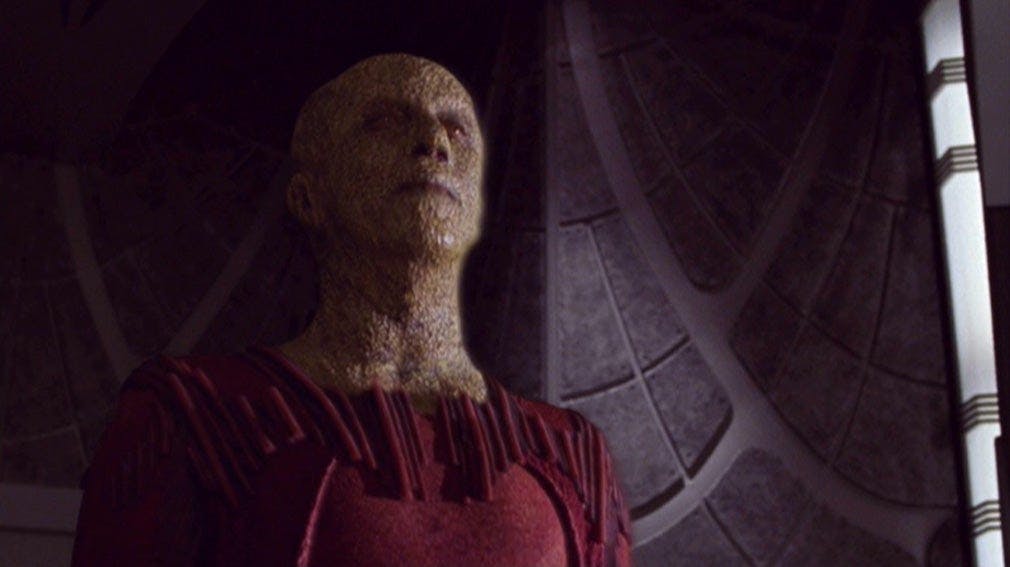
StarTrek.com
Just as the villains of Star Trek: Voyager reflected the 1990s, the villains of Enterprise reflected the 2000s. When developing the series, producer Rick Berman named the Suliban after the Taliban, drawing on his personal experience as a documentarian in Afghanistan.
Vaadwaur
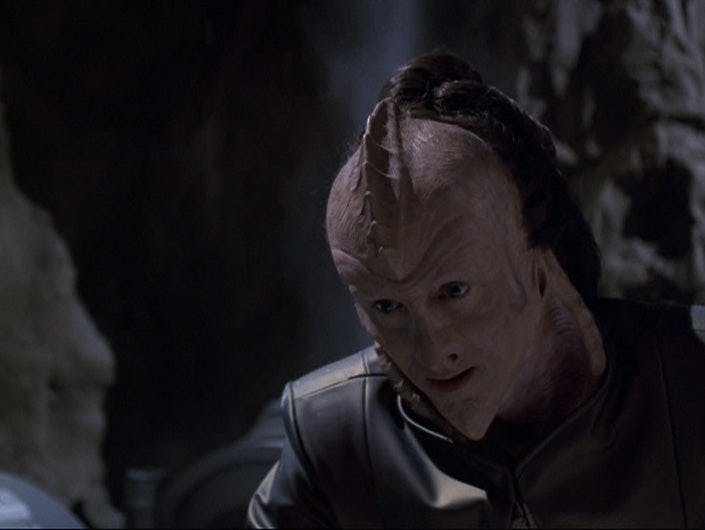
StarTrek.com
The Vaadwaur looked to be recurring villains in the later seasons of Star Trek: Voyager, but ultimately they caused trouble in just a single episode. Their calling card was the use of subspace tunnels to travel incredible distances, and to appear and to vanish without warning. In Hindi, vah dvaar best translates to “that door.” Had the Vaadwaur become recurring villains, I wondered if their subspace tunnels would have been the door to get Voyager home.
Vulcan
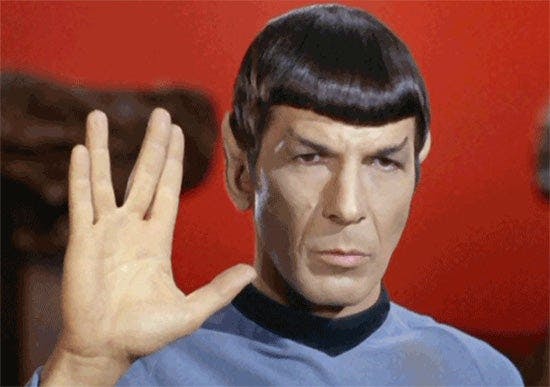
StarTrek.com
Vulcan is another character from Roman mythology, this time the god of fire. “Vulcan” was also the name given to an apocryphal planet in the 19th century, a hellish world believed to be closer than Mercury to the Sun. Although the name did not align with the cool demeanor of Mr. Spock, it did fit his unbearably hot homeworld.
---
As I compiled this list for StarTrek.com, I confirmed I was not crazy: There was an Indian influence in Star Trek. What was going on? Western science fiction tended to draw from Western mythology, but Hindi words? The British Raj?
In researching, I learned the doomed Narendra III outpost was named after Naren Shankar, an Indian-American writer who worked on multiple Star Trek series. Meanwhile, Gene Roddenberry’s naming of the Ferengi carried weight in cultures spanning the breadth of Asia. The Jem’Hadar’s name came from the thesaurus.
A Timeline Through the Star Trek Universe
Star Trek, as I have learned over and over, is not a singular vision. It is a sandbox, in which generations of creative minds have left behind themes, coincidences, and happy accidents. As viewers jump into the sandbox, there is no wrong way to play.
Nitesh Srivastava (he/him) is a writer and marketer who lives in Des Plaines, Illinois. You can find him on Twitter at @niteshsrivastav

